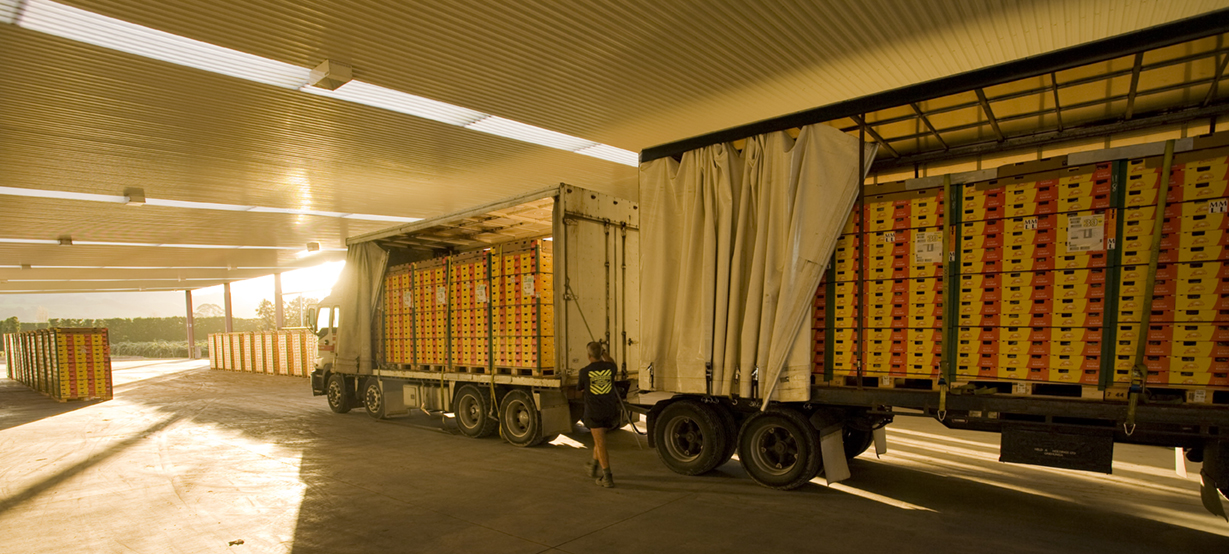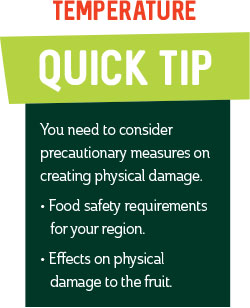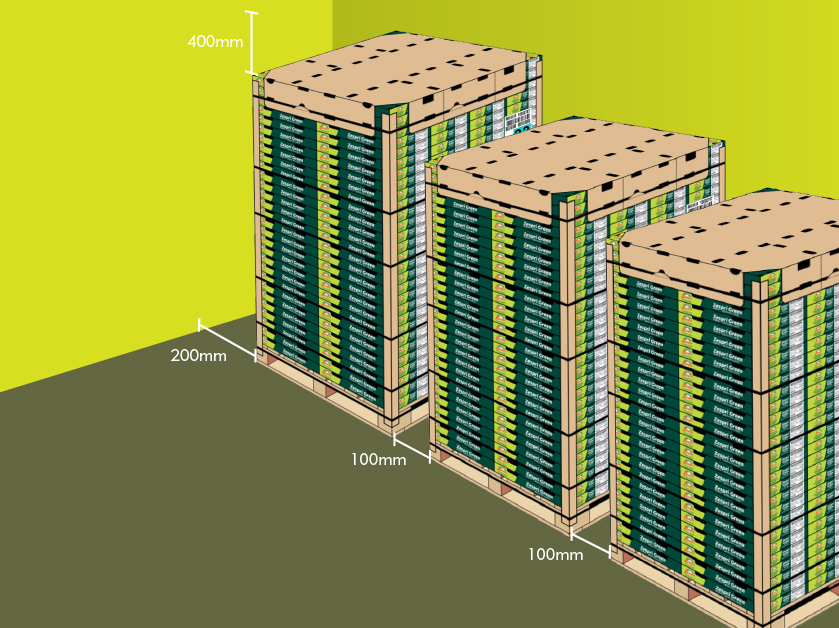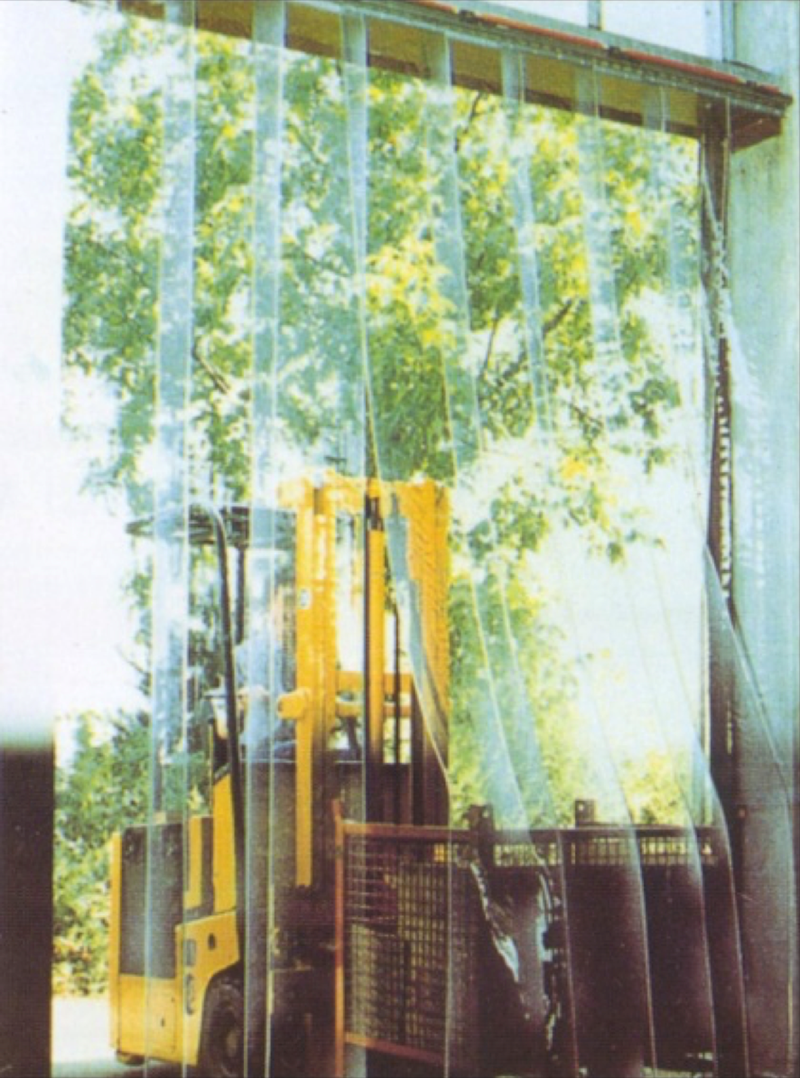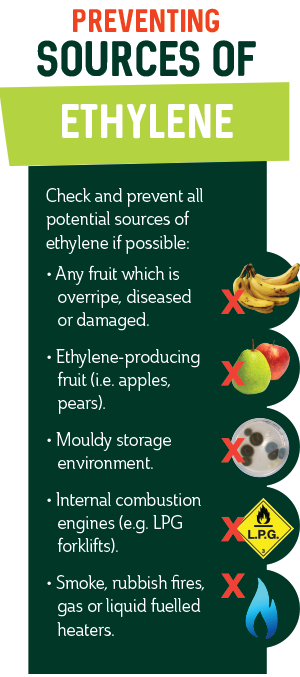Containers
If you are an importer receiving containers, it is critical that you assess the storage conditions of the container as soon as possible. Early inspection, will provide crucial time-dependent indicators as to the occurrence of any temperature issues during the voyage, which could have an impact on your fruit quality.
Initial Inspection and Temperature recorders
The initial inspection of a container is very important, as it will provide you with useful information about how the fruit has performed during the voyage. Follow these guidelines at the devanning (unloading) stage to get a better understanding about how each container has performed.
-
Check overall consignment condition- Inspect pallets and packs to see if there are signs of a rough voyage. Look in the container for any signs of excessive moisture or ice content, this could indicate issues with the refrigeration unit.
-
Retrieve the temperature recorder - When the container doors are first opened you will see a temperature recorder (TempTale logger) near the base of one of the front pallets. This recorder holds temperature data from when the container first left the cool store back in New Zealand. Retrieve the logger and hold down the stop button until the stop sign As soon as possible download the TempTale’s data via ColdStream/Zespri's portal – this will let you and Zespri know if there were any temperature failures during transit. (link to TempTale images + logger handling instructions)
-
Check container temperature – Ensure the container temperature arrived in specification by checking and recording results against container number;
-
Container LCD display at opposite end of container door prior to opening.
-
TempTale LCD as soon as door is opened.
-
At least one pallet fruit temperature at time of door opening.
If temperature(s) outside specification, take additional pallet fruit temperatures against the pallet number and location that it came from within the container.
-
Take fruit temperature readings - Take manual fruit temperature readings as soon as possible after opening the container doors. This will help you to quickly identify if there was any temperature issues during transit. Take temperatures from one or more pallets and record the pallet ID numbers against the temperature [link to temperature page] & [link to record pallet ID]
-
Check Container Ventilation – If you have identified that there is an issue with the container, check the vents to ensure they are clear. The vents should have been set at 15 m3 / h.
Marine Cargo Claims - If you find your container has a significant quality issue and as a result, you need to make a marine cargo claim; notify your Zespri local representative ZGL Insurance Manager as soon as possible (within 24h). ZGL Zespri will arrange to assess the damage.
